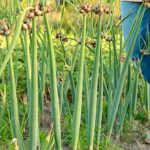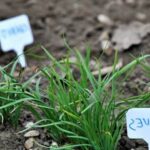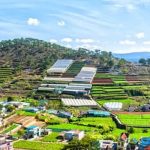Are you wondering how to use rain barrels to water vegetable gardens? Rain barrels are an eco-friendly and cost-effective way to collect and store rainwater for gardening purposes. In this article, we will explore the benefits of using rain barrels, tips for setting up a rain barrel system, and efficient ways to water your vegetable garden while embracing sustainable gardening practices.
Rain barrels are an essential tool for any environmentally-conscious gardener. By collecting and storing rainwater, you can reduce your reliance on municipal water supplies and lower your water bill. Additionally, using rainwater for your vegetable garden can provide natural nutrients that are beneficial for plant growth. With the right knowledge and setup, you can maximize the potential of rain barrels to support a thriving vegetable garden.
When it comes to using rain barrels in your vegetable garden, there are several factors to consider. From choosing the right rain barrel to setting up a proper collection system, it’s important to understand how to effectively utilize this sustainable resource.
In the following sections, we will guide you through the process of selecting the best rain barrel for your garden, setting it up for optimal performance, and maintaining it for long-term use. Get ready to learn everything you need to know about incorporating rain barrels into your gardening routine.
Choosing the Right Rain Barrel for Your Vegetable Garden
When it comes to choosing the right rain barrel for your vegetable garden, there are a few key factors to consider. First and foremost, you’ll want to think about the size of the barrel. The average rainfall in your area and the size of your garden will determine how large of a rain barrel you will need. It’s important to choose a size that can accommodate your needs without taking up unnecessary space in your garden.
Another important consideration is the material of the rain barrel. Common options include plastic, wood, and metal. Plastic barrels are typically more affordable and lightweight, making them easy to transport and install. Wood barrels may provide a more attractive aesthetic but require more maintenance. Metal barrels are durable but can be prone to rust over time.
You’ll also want to think about additional features such as an overflow hose or spigot for easy access to the collected water. Some rain barrels even come with built-in filtration systems to ensure that the water collected is clean and suitable for watering your vegetable garden.
In addition, consider if you would like a rain barrel with a flat back design that sits flush against the side of your house or a round barrel that stands freely in your backyard. Each style has its own advantages, so it’s important to weigh all these considerations before making your selection.
| Key Factors | Considerations |
|---|---|
| Size | Determine based on average rainfall and garden size |
| Material | Plastic, wood, or metal options with different pros and cons |
| Addition Features | Consider overflow hose, spigot access, and filtration systems |
| Design | Choose between flat back or round style based on preferences |
Setting Up Your Rain Barrel System
Choosing the Right Location
Before setting up your rain barrel system, it’s important to choose the right location for it. Look for a spot that is close to a downspout from your home’s gutter system. This will make it easier to direct the flow of rainwater into the barrel. Additionally, ensure that the location you choose is on level ground to prevent the barrel from tipping over.
Installing Your Rain Barrel
Once you’ve found the perfect spot for your rain barrel, it’s time to install it. Start by placing cinder blocks or a stable platform under the barrel to elevate it.
This elevation will create better water pressure when you use a hose or spigot to access the stored rainwater. Then, carefully place the rain barrel on top of the platform and connect it to the downspout using a flexible extender to capture as much water as possible during rainfall.
Add a Overflow and Diverter System
To prevent overflow during heavy rainfall, consider adding an overflow and diverter system to your rain barrel setup. These systems help redirect excess water away from your home’s foundation and prevent any potential flooding issues while ensuring that you maximize the amount of rainwater collected.
With these steps in mind, setting up a rain barrel system for your vegetable garden can be an eco-friendly and sustainable way to provide water for your plants while conserving resources at the same time.
Maintenance and Care Tips for Rain Barrels
Rain barrels are a great eco-friendly solution for watering your vegetable garden, but they do require some maintenance to ensure they function properly. Here are some tips for keeping your rain barrels in good working condition:
1. Regular cleaning: It’s important to regularly clean out your rain barrel to prevent the buildup of debris, algae, and other contaminants. Use a mild detergent and water to scrub the inside of the barrel, and be sure to rinse it out thoroughly.
2. Check for leaks: Inspect your rain barrel regularly for any signs of leaks or damage. This will help you catch any issues early on and prevent water loss.
3. Maintain proper drainage: Ensure that the overflow valve is functioning correctly to prevent flooding around the base of the rain barrel. You may also want to consider installing a filter to keep out leaves and other debris.
Proper maintenance of your rain barrel will not only ensure that you have a clean and reliable source of water for your vegetable garden, but it will also prolong the life of your rain barrel system.
| Maintenance Tip | Details |
|---|---|
| Regular cleaning | Use mild detergent and water to scrub inside; rinse thoroughly. |
| Check for leaks | Inspect regularly; repair any damage promptly. |
| Maintain proper drainage | Ensure overflow valve is functional; consider installing a filter. |
Tips for Properly Collecting Rainwater
Properly collecting rainwater is essential for maximizing the benefits of using rain barrels to water your vegetable garden. Here are some important tips for ensuring that you collect and store rainwater effectively:
Positioning Your Rain Barrel
When setting up your rain barrel, it’s crucial to position it in a location where it can efficiently collect rainwater. Place the barrel directly under a downspout to capture as much runoff as possible from your roof. Ensure that the area around the barrel is level and stable to prevent any tipping or shifting.
Using a Filter
To prevent debris from entering your rain barrel, consider installing a filter at the entry point. A fine mesh screen or filter will help to keep out leaves, twigs, and other contaminants, ensuring that the water collected is clean and suitable for watering your vegetable garden.
Regular Maintenance
Regular maintenance of your rain barrel is essential for effectively collecting rainwater. Clean out the barrel regularly to remove any sediment or build-up that may accumulate over time. Additionally, check for any leaks or damage to the barrel to ensure that it remains in good working condition.
By following these tips for properly collecting rainwater, you can make the most of your rain barrel system and provide a sustainable water source for your vegetable garden.
The Benefits of Using Rainwater for Your Vegetable Garden
Using rainwater to nourish your vegetable garden can bring various benefits not only to your plants but also to the environment as a whole. Here are some of the advantages of using rain barrels for watering your vegetable garden:
- Chemical-Free Water: Rainwater is devoid of the chemicals found in tap water, making it a healthier alternative for your plants.
- Cost Savings: By utilizing rain barrels, you can reduce your water bill by relying less on municipal water sources for your gardening needs.
- Eco-Friendly Solution: Using rain barrels helps in conserving water and minimizing stormwater runoff, contributing to environmental sustainability.
Incorporating rain barrels into your gardening routine not only benefits your plants but also provides an eco-friendly solution to conventional gardening practices. By capturing and using rainwater, you can contribute to reducing the demand for treated water while promoting a more sustainable approach to gardening.
Moreover, utilizing rainwater for watering your vegetable garden allows you to have a consistent supply of water, especially during dry spells or droughts. This ensures that your plants receive adequate hydration without putting strain on local water resources. With these benefits in mind, integrating a rain barrel system into your vegetable garden can be an efficient and environmentally responsible choice.
Tips for Efficiently Watering Your Vegetable Garden With Rain Barrels
Using rain barrels to water your vegetable garden is not only eco-friendly, but it can also help you save money on your water bill. However, it is important to use the collected rainwater efficiently to ensure that your garden gets the right amount of water it needs. Here are some tips for efficiently watering your vegetable garden with rain barrels:
- Use a soaker hose or drip irrigation system: These options deliver water directly to the roots of your plants, reducing water waste from evaporation or runoff.
- Water in the early morning or late afternoon: By watering during these times, you can minimize water loss from evaporation and ensure that the plants have enough moisture during the heat of the day.
- Monitor soil moisture: Check the moisture level of your soil regularly to avoid overwatering or underwatering your vegetable garden. This will help you adjust your watering schedule accordingly.
Efficiently using rain barrels for watering also involves proper maintenance and care. Make sure to keep your rain barrels clean and free from debris to prevent clogging and contamination. Position them in a way that allows gravity to help with water flow, and regularly inspect them for any leaks or damage.
In addition to using rain barrels, consider incorporating other sustainable gardening practices into your garden plan. Mulching around your vegetables can help retain soil moisture, reduce weed growth, and improve soil health. Choosing drought-resistant plant varieties can also make your garden more resilient during dry periods. By combining rain barrel usage with these practices, you can achieve a more sustainable and efficient vegetable garden.
Sustainable Gardening Practices
Incorporating rain barrels into your garden plan is a sustainable gardening practice that can benefit both your vegetable garden and the environment. By collecting rainwater, you can reduce your reliance on treated water sources and lower your utility bills. Additionally, using rainwater for watering your vegetable garden reduces the demand for treated water, which is especially important in areas facing water scarcity.
To incorporate rain barrels into your garden plan, consider the layout of your vegetable garden and the amount of rainfall in your area. Choose a location for your rain barrel that is convenient for accessing and using the collected rainwater. Consider installing multiple rain barrels to increase the storage capacity and ensure you have enough water for your vegetable garden during dry periods.
Incorporating rain barrels into your garden plan also involves integrating them seamlessly into your overall garden design. You can camouflage the rain barrels with plants or decorative fencing to make them visually appealing while still being functional. By incorporating rain barrels into your garden plan, you can contribute to sustainable gardening practices and promote environmental conservation.
Conclusion
In conclusion, embracing the use of rain barrels for watering vegetable gardens is a sustainable and eco-friendly solution that offers numerous benefits. By utilizing rainwater as a free and natural resource, gardeners can reduce their dependence on treated water, lower their water bills, and contribute to the conservation of freshwater. Additionally, using rain barrels helps to reduce stormwater runoff, erosion, and pollution, thus benefiting the environment as a whole.
Furthermore, incorporating rain barrels into your garden plan promotes self-sufficiency and resilience in times of water scarcity or drought. By capturing and storing rainwater during wet periods, gardeners can ensure a consistent water supply for their vegetable gardens during dry spells. This reduces the stress on local water supplies and supports the overall health and productivity of the garden.
Overall, by choosing the right rain barrel for your specific needs, setting up an efficient rainwater collection system, maintaining and caring for your rain barrels properly, and following best practices for collecting and using rainwater in your vegetable garden, you can successfully embrace this eco-friendly solution. With proper planning and implementation, utilizing rain barrels can become an integral part of sustainable gardening practices that benefit both your garden and the environment.
Frequently Asked Questions
Is It Safe to Water Vegetables With Rain Barrel Water?
Using rain barrel water to irrigate vegetables can be safe if certain precautions are taken. It’s important to ensure that the rain barrel and any watering equipment used are kept clean to prevent contamination. Additionally, it’s advisable to properly filter and treat the rainwater if it’s being used on edible plants.
How Do You Water a Garden With a Rain Barrel?
Watering a garden with a rain barrel involves using a hose or spigot attached to the barrel to distribute the collected rainwater throughout the garden. It’s important to position the barrel at a higher elevation than the garden for better water pressure and consider using soaker hoses or drip irrigation systems to efficiently water the plants.
How Do You Use Rainwater in a Vegetable Garden?
Rainwater can be used in a vegetable garden by collecting it in good quality barrels or containers during rainy periods. This collected rainwater can then be used to supplement regular watering needs, reducing reliance on tap water and conserving resources. Proper management of rainwater storage and distribution is essential for maximizing its effectiveness in a vegetable garden.

If you’re looking to get into vegetable gardening, or are just looking for some tips on how to make your current garden better, then you’ve come to the right place! My name is Ethel and I have been gardening for years. In this blog, I’m going to share with you some of my best tips on how to create a successful vegetable garden.





